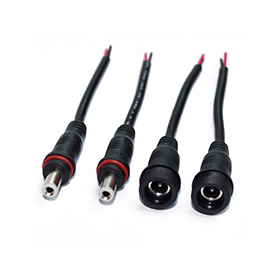News


News

The Ultimate Guide to Waterproof Low Voltage Connectors: Best Practices & Maintenance
Release time:2025-04-15
viewed:368
Waterproof low voltage connectors (typically ≤60V) are indispensable in outdoor lighting, solar systems, security devices, and industrial automation. To ensure reliability in harsh environments—such as moisture, dust, or corrosive conditions—proper selection, installation, and maintenance are critical. This guide covers essential considerations, installation protocols, and best practices to maximize performance and longevity.

IP67: Protects against temporary submersion (1 meter depth for 30 minutes). Ideal for outdoor lighting and vehicle sensors.
IP68: Designed for prolonged underwater use (e.g., pond pumps, underwater robots).
Verify the per-pin current rating (e.g., 10A for 2-pin connectors). Avoid mixing power and signal lines in the same connector to prevent interference.
Housing:
Nylon: Cost-effective and impact-resistant.
Stainless Steel: Ideal for saltwater or corrosive environments.
PBT Plastic: Heat-resistant (up to 125°C).
Contacts:
Gold-Plated: Oxidation-resistant for signal transmission.
Silver-Plated: Cost-efficient for high-current applications.
Strip wires to 5–8mm and ensure no loose strands. Use ratchet crimpers with gold/silver-plated terminals to minimize contact resistance.
O-Ring Lubrication: Apply silicone grease (e.g., Dow Corning DC4) to O-rings before assembly.
Potting Compounds: Use epoxy or silicone to fill voids in connectors for underwater or high-humidity applications.
For threaded connectors, tighten to 0.5–1.5 N·m torque to avoid damaging seals.
For snap-lock types, listen for a "click" to confirm full engagement.
Maintain a minimum bend radius of 5× the cable diameter. Use nylon ties or strain relief sleeves to secure cables.
Thermal Shock: Avoid rapid temperature shifts (e.g., -40°C to +80°C) to prevent seal cracking.
Chemical Exposure: Rinse salt/chemical residues with water and apply anti-corrosion grease (e.g., NO-OX-ID).
Separate power (12V/24V) and signal lines (e.g., RS-485). Use shielded connectors for noise-prone environments.
Monthly: Check O-ring elasticity and clean contacts with isopropyl alcohol.
Biannually: Test continuity with a multimeter and measure insulation resistance (≥100MΩ).
Poor Contact: Polish oxidized surfaces and reapply conductive grease.
Water Ingress: Dry components thoroughly and re-pot with epoxy.
O-Rings: Replace every 1–2 years.
Potting Compounds: Inspect every 3–5 years.
Use IP68-rated connectors with drainage holes. Opt for UV-resistant stainless steel housings.
Install dust caps on unused ports. Choose shielded M12 connectors (4-pin) for PROFINET/CAN communications.
Use vibration-resistant designs (e.g., Deutsch DTM spring-lock). Pair 14AWG power cables with 20AWG shielded signal lines.
Reliable performance of Waterproof low voltage connectors hinges on proper selection, meticulous installation, and proactive maintenance. By adhering to these guidelines, you can significantly reduce failure rates and extend equipment lifespan in demanding environments.